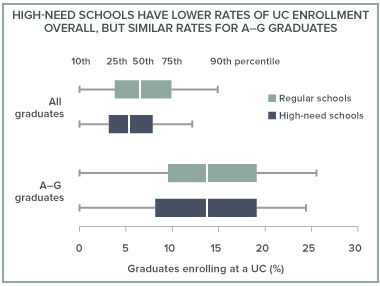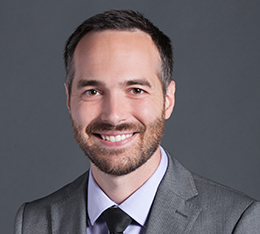The newly approved state budget contains two strategies to enroll more students from disadvantaged backgrounds in the University of California (UC) system and other postsecondary institutions. These spending commitments are designed to increase college readiness and access for the state’s most vulnerable students.
First, the state allocated $200 million to the new College Readiness Block Grant program, which funds “additional services that support access and successful transition to college” for three categories of students: English Learners, students from low-income families, and foster youth. This grant may support a variety of activities related to college readiness—including efforts to increase the number of students completing college preparation courses, such as the a–g course sequence required to attend UC. The College Readiness Block Grant is available to any school that serves students from these designated categories.
Second, the budget also includes funding for the UC system to monitor and increase application, admission, enrollment, and graduation rates among students from “high-need” schools—high schools where 75% or more of the students fall into one of the categories above. Currently, we know little about whether students from high-need schools attend UC and how to get more of them to enroll. I combined data on graduation from public schools and UC enrollment to explore these questions.
What do we know about high-need schools?
 In 2015, about 38% of California’s high schools (480 total) were high need based on high rates of enrollment for English Learner, low-income, and foster care students. These schools educate about 34% of all high school students in the state. High-need schools also serve higher proportions of students traditionally underrepresented at UC: about 43% of the African American students in the state and about 51% of California’s Latino students.
In 2015, about 38% of California’s high schools (480 total) were high need based on high rates of enrollment for English Learner, low-income, and foster care students. These schools educate about 34% of all high school students in the state. High-need schools also serve higher proportions of students traditionally underrepresented at UC: about 43% of the African American students in the state and about 51% of California’s Latino students.
High-need schools are less likely to produce graduates who have completed the a–g course sequence required to attend UC. The percentage of all graduates who complete a–g courses at the typical (50th percentile) high-need school is 39%, compared to 49% at regular schools. However, there is a lot of overlap. For example, the top quarter of high-need schools have higher percentages of a–g graduates than the bottom half of regular schools.
Do graduates from high-need schools enroll at a UC?
 On average, students from high-need schools are slightly less likely to enroll in a UC. About 5.4% of all graduates enroll in a UC at a typical high-need school, compared to 6.5% for a typical regular school.
On average, students from high-need schools are slightly less likely to enroll in a UC. About 5.4% of all graduates enroll in a UC at a typical high-need school, compared to 6.5% for a typical regular school.
However, a–g completion rates are likely driving the difference in UC enrollment between high-need schools and regular schools, since students at regular schools are more likely to have completed a–g courses. When examining the number of UC enrollees compared to the number of a–g graduates a school produces, we see no difference between regular and high-need schools.
The College Readiness Block Grant program’s focus on helping to prepare students for college might be an effective strategy to increase UC enrollment from high-need schools that would not require many changes to admissions policy in the UC system. Evidence suggests that improving a–g completion rates at high-need schools will help boost UC enrollment of graduates from these schools.

